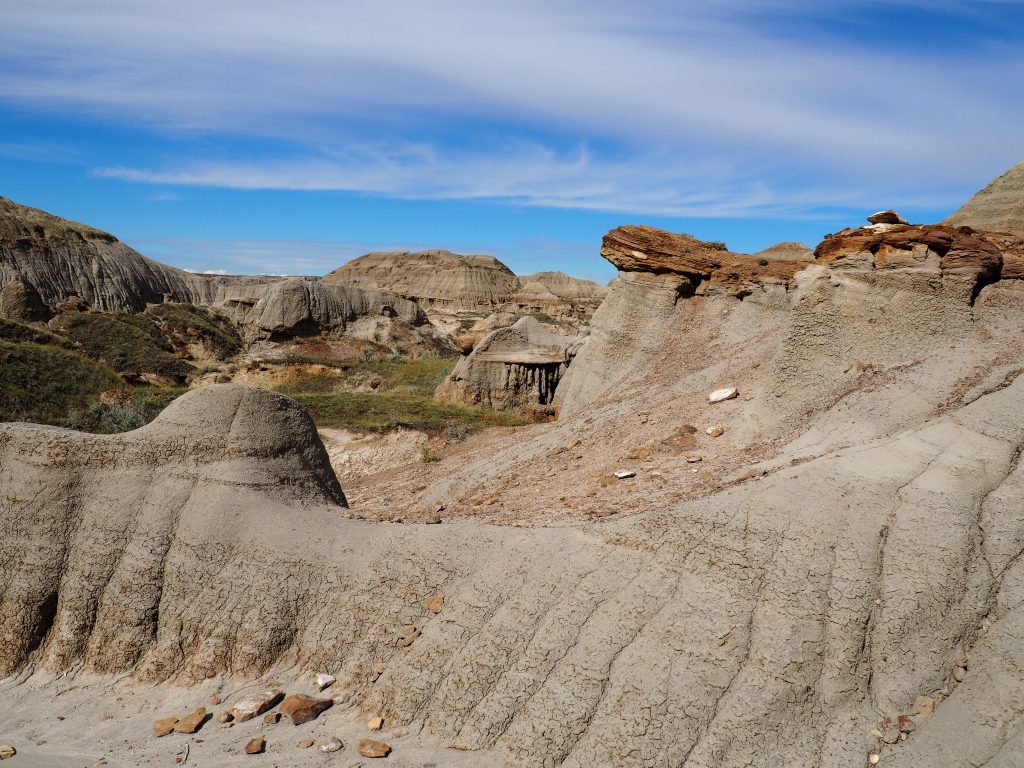6.1 Weathering
R. Adam Dastrup and Laura J. Brown
Weathering is what takes place when a body of rock is exposed to the “weather” — in other words, to the forces and conditions that exist at Earth’s surface. Most rocks are formed at some depth within the crust except for volcanic rocks and some sedimentary rocks. They experience relatively constant temperature, high pressure, no contact with the atmosphere, and little or no moving water. Once a rock is exposed at the surface, which is what happens when the overlying rock is eroded, conditions change dramatically. Temperatures vary widely, there is much less pressure, oxygen and other gases are plentiful, and in most climates, water is abundant.
Weathering includes two main processes that are entirely different. One is the mechanical breakdown of rock into smaller fragments, and the other is the chemical change of the minerals within the rock to forms that are stable in the surface environment. Mechanical weathering provides fresh surfaces for attack by chemical processes, and chemical weathering weakens the rock so that it is more susceptible to mechanical weathering. Together, these processes create two significant products, one being the sedimentary clasts and ions in solution that can eventually become sedimentary rock, and the other is the soil necessary for our existence on Earth.


